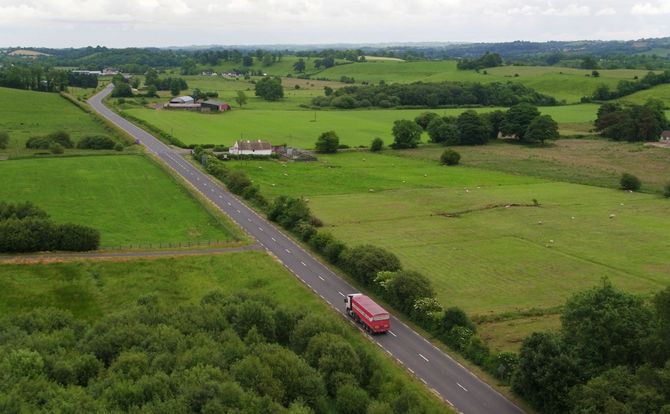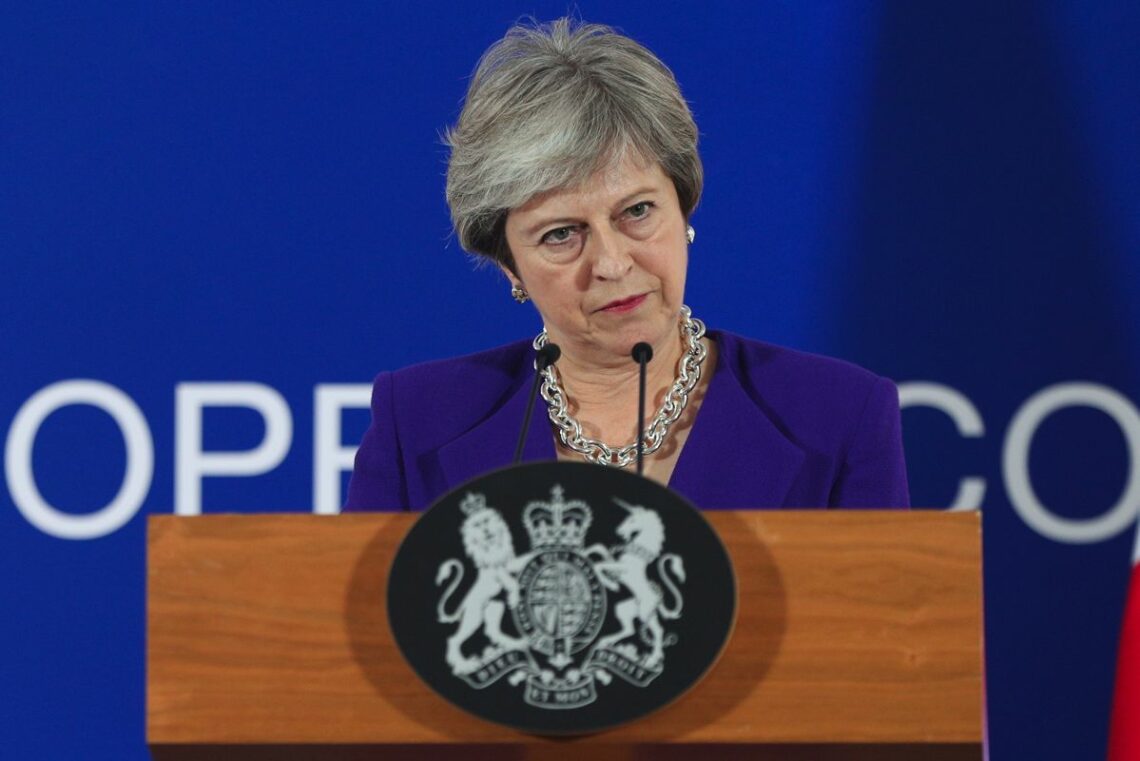Brexit and trade
Brexit talks were supposed to be concluded at the EU summit on October 17. But the deadline passed with no breakthrough. With the clock to a “hard Brexit” ticking down, this could be the salutary shock needed to reach a compromise — or point to a future in which encourages a drift toward protectionism.

In a nutshell
- The impasse in Brexit talks points to a last-minute compromise or a “hard” Brexit
- In the former case, real trade talks between the UK and EU may not start until 2020
- A no-deal Brexit would hurt trade on both sides and could strenghten protectionism
Brexit negotiations between the European Union and the United Kingdom were supposed to be concluded at the October EU summit. But the deadline passed with no breakthroughs, and no plans for a new meeting, unless “decisive” progress is made by the negotiators. At least in Brussels, the two sides avoided the theatrics of the informal September summit in Salzburg, which the British popular media depicted as an “ambush” and “humiliation” for Prime Minister Theresa May. After it was over, Brexiters renewed their calls for the country to “take back control” and French Finance Minister Bruno Le Maire responded that the EU would not “commit suicide” by acceding to British demands.
Such hyperbole distracts attention from the economic realities underlying the negotiations, many of which concern trade. British negotiators maintain that the long-term solution to avoiding a hard border across Ireland lies in “frictionless” trade between the EU and the UK. Options for future trade arrangements are the subtext of the inconclusive talks on the terms for Britain’s withdrawal from the EU scheduled for March 29, 2019. Brexit will also diminish the EU’s weight in international trade talks and may tilt its posture toward greater protectionism, especially in light of the Trump administration’s penchant for trade conflict.
Trade options
Mrs. May regards her controversial Chequers plan for a hybrid customs union covering trade in goods but not services, and partial regulatory alignment, as the only basis for negotiations. She claims that this would remove the need for a hard border across Ireland and protect just-in-time supply chains. Her proposal, however, has been rejected by the EU, despite recognition in Brussels that it contains some new thinking.
Theresa May’s “red lines” preclude any other model that would be acceptable to the EU such as the European Economic Area (EEA) or the EU-Canada Comprehensive Economic and Trade Agreement (CETA). Her main political challenger in the Conservative Party, former Foreign Secretary Boris Johnson, argues that a “Super-Canada” style free trade agreement (FTA) is the best way forward, but that view has been rebutted by the prime minister’s officials. Under these circumstances, two scenarios can be foreseen: a realistic compromise or a no-deal Brexit.
Realistic compromise
A benign view of the clashes in Brussels and Salzburg is that they may provide a salutary shock paving the way for a compromise, albeit at the 11th hour. Crises are often required to break a negotiating deadlock. A last-minute compromise would acknowledge that the Irish backstop – whereby Northern Ireland would remain in the EU’s customs union and single market to avoid the need for border controls with the Republic of Ireland – should never need to be used and would limit the accompanying political declaration on future relations to a statement of principles, without endorsing any particular trade model. French President Emmanuel Macron and hard-line Brexiters complain that this would amount to a “blind Brexit,” but it now seems the most likely outcome.
Brexiters condemn even a one-year extension as preserving the UK’s vassal status, but it would have clear benefits.
Under a “blind Brexit” scenario, formal negotiations on future trade relations would probably begin only toward the end of 2019 or in early 2020. This would give time for Brussels to sort out personnel changes after the European Parliament elections in May and the expiration of the current Commission’s term on October 31. The new EU leadership, reflecting “populist” pressures in the electorate, might well take a different line from the grand coalition of socialists and conservatives that has dominated EU institutions until now.
The uncertain status of negotiations implies that there will be pressure to prolong the status quo between Britain and the EU, with unobstructed trade and open borders, beyond the 21-month transitional period now mooted. At the Brussels summit Mrs. May appeared open to a one-year extension, though more time than this would be needed to conclude an ambitious trade agreement. British euroskeptics have condemned even a one-year extension as preserving the UK’s “vassal” status, but it would have clear benefits for business and citizens.
No-deal Brexit
There is no assurance, however, that such a compromise can be reached and forced through the British parliament. Its probability now stands at barely 60 percent. The alternative, a no-deal Brexit, would bring chaos for several weeks at least. The British government has issued detailed warnings of the possible consequences. The European Commission, too, is seeking ways to mitigate the potential impact. In areas ranging from air traffic to medical supplies, it will be hard to maintain continuity in the event of a no-deal Brexit.
These problems, long dismissed by euroskeptics as “project fear,” are now widely acknowledged and provide an additional incentive to reach agreement. Under a no-deal Brexit, supply chains and time-sensitive food exports would face border delays as Britain and EU countries scramble to recruit customs officers and install IT systems and infrastructure at ports and airports to permit systematic checks on shipments.
Defaulting to WTO rules
Brexiters claim that, without an EU agreement, trade would continue harmoniously, with the UK defaulting “to WTO (World Trade Organization) rules.” But this would be far from automatic, since the organization’s 164 members would be expected to “certify” Britain’s future WTO commitments.
Britain already belongs to the WTO but until now its membership has been exercised through the EU, which has far-reaching legal responsibilities for trade. There should be few difficulties on tariffs, which initially will remain unchanged, or on government procurement, services and subsidies. WTO members worry mainly about tariff-rate quotas (TRQs), which permit fixed quantities of farm goods to be imported at reduced or zero tariffs.

In a rare show of common purpose, the UK and the EU proposed in a joint letter that their respective TRQs be worked out “through an apportionment of the EU’s existing commitments, based on trade flows.” The European Commission formally recommended that the Council share out the EU’s TRQ commitments between the UK and the EU, as London and Brussels will have separate trade regimes after Brexit. Britain has already sent to WTO members its own proposed “schedule of commitments” – a bulky, 719-page document.
Major agriculture exporting countries, including the United States, Australia, Argentina, Brazil, Canada, New Zealand, Thailand and Uruguay have complained that their exporters will lose market access and flexibility under the proposed EU-UK share-out of TRQs. This increases the likelihood that, in the event of a no-deal Brexit, Britain would be trading on uncertified schedules, with the legal uncertainty and scope for disputes that this involves.
Under these circumstances, the UK would also face European tariffs, with high peaks for some farm goods and automobiles. Therefore, a default to WTO rules will not be the smooth ride that euroskeptics claim, especially as the international trade system is beset with tariff wars that the UK would face alone once it quits the EU’s customs union.
Global Britain
The British government has raised expectations about concluding Free Trade Agreements (FTAs) with countries around the world under the slogan “global Britain.” But any such agreements could only be concluded and implemented after the expiration of the 21-month transitional period with the EU, which may well be prolonged.
The UK has publicly launched consultations for FTAs with the U.S., Australia, and New Zealand and for accession to the Comprehensive and Progressive Agreement for Trans-Pacific Partnership (CPTPP). However, the UK’s ability to join CPTPP will be determined in large measure by how its future relationship with the EU is defined.
To gauge their own exporters’ interests in a trade deal with the UK, Britain’s international partners will want to know whether the UK will have “frictionless” access to the EU market. Until this is clarified, there will be expressions of goodwill about future bilateral relations from countries like the U.S., Argentina, Australia, Canada and New Zealand, but few specifics. In the meantime, Australia and New Zealand are pursuing long-postponed trade talks with the EU. The Indian government is in no hurry to conclude a bilateral trade deal, which will be conditioned on a relaxation of UK visa restrictions, especially for students.
Before making bilateral deals, Britain’s trading partners will want to know whether it has frictionless access to the EU.
Theresa May talked up prospects for a “big and ambitious” trade agreement with the U.S. after her September 26 meeting with President Donald Trump on the sidelines of the UN General Assembly. Mr. Trump, however, was silent on the subject in his public comments in New York. In any event, the same sensitive regulatory issues that dogged the unsuccessful Transatlantic Trade and Investment Partnership (TTIP) negotiations between the EU and the U.S. will come up again in any future bilateral talks with Washington. The recently concluded U.S.-Mexico-Canada FTA contains a provision that appears to constrain Mexico’s and Canada’s ability to negotiate an FTA with China. If the U.S. imposed a similar provision on the UK, it would severely limit Britain’s capacity to negotiate “big trade deals” in the future.
Mrs. May claims that freedom to conclude bilateral trade agreements with countries around the globe will be one of the main benefits of Brexit. But EU membership has not prevented Germany from racking up the world’s largest trade surplus. The EU has trade agreements in force with 35 countries, and provisional deals (pending ratification) with another 27. As recently as July, a major economic partnership was signed with Japan.
To enjoy similar benefits after Brexit, the UK must replicate all these agreements, plus a raft of new ones to fulfill its ambitions to be a global player. Brexit enthusiasts claim it will be easier for Britain, as a single sovereign state, to negotiate these deals. Even so, constructing a network of FTAs comparable to the EU’s will take a decade or more. In the interim, Global Britain will remain an unfulfilled aspiration as the country works overtime to reproduce EU regulatory arrangements and engage with cautious partners around the world.
Impact on EU trade
Brexit will also have trade consequences for the EU. Brussels is already facing demands from agricultural exporters that the EU’s TRQs should not be cut because of Brexit. Many of these tariff quotas are rather small and could be reduced to commercial insignificance, especially in cases where the UK traditionally accounted for a major share of EU imports. Several WTO members have proposed a dialogue to find solutions to their exporters’ concerns. But there is little chance of this yielding results before March 29, 2019, the exit date now enshrined in British law.
After Brexit, the EU may tilt away from free trade as the balance of opinion in member states shifts toward greater protection and the Union faces punitive U.S. tariffs. But trade partners, especially in the Asia-Pacific region, will seek to keep the EU engaged, arguing that bilateral agreements can provide a springboard for new regional arrangements that could be advantageous to European investors and exporters. In the event of a “hard” Brexit, European exporters’ losses on the UK market could be compensated, to some degree, by better access to growing Asia-Pacific markets.
If the EU wishes to revive the open, rules-based global trading system after Brexit, it will need to resist protectionist pressures from within while working to build new international alliances.








